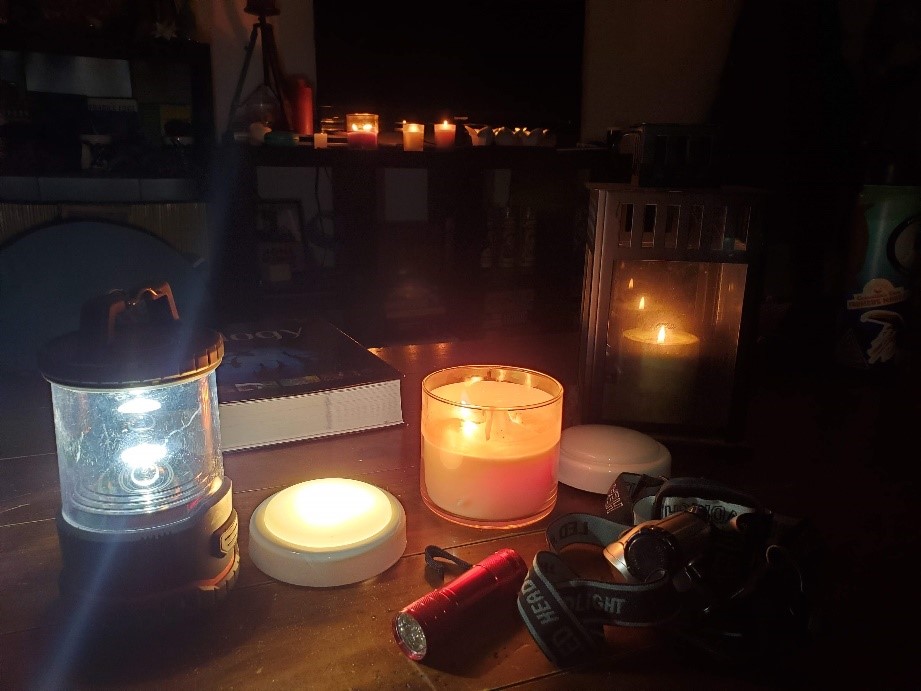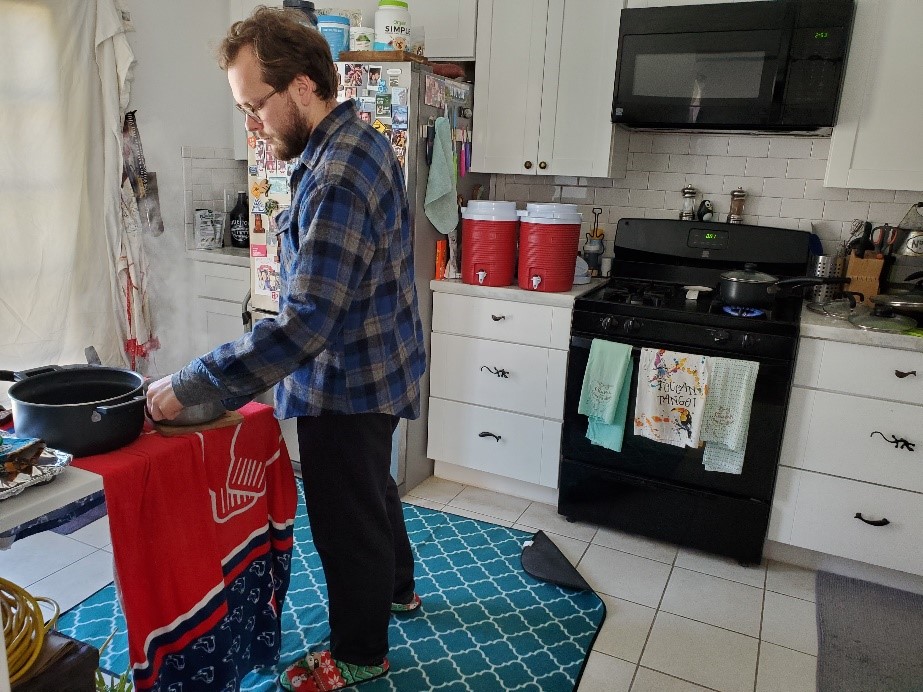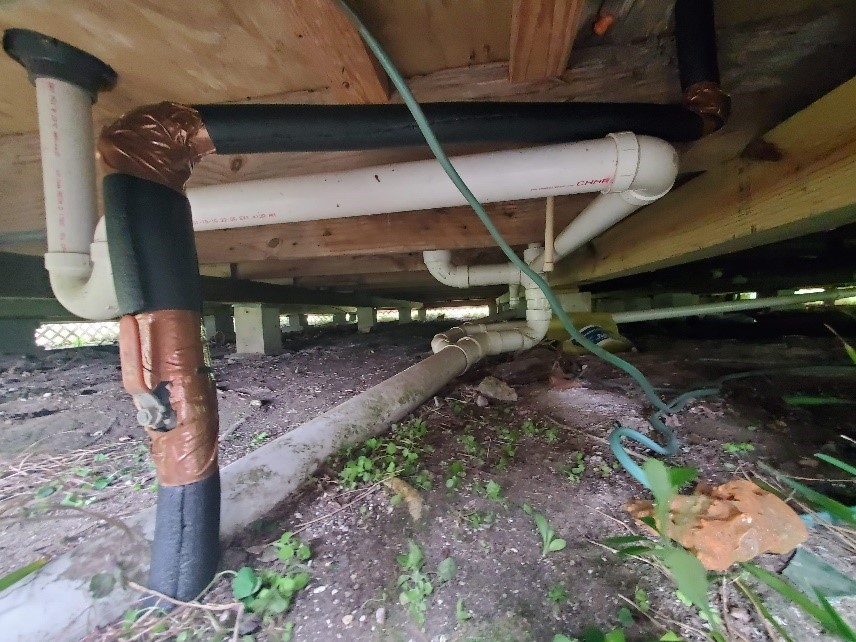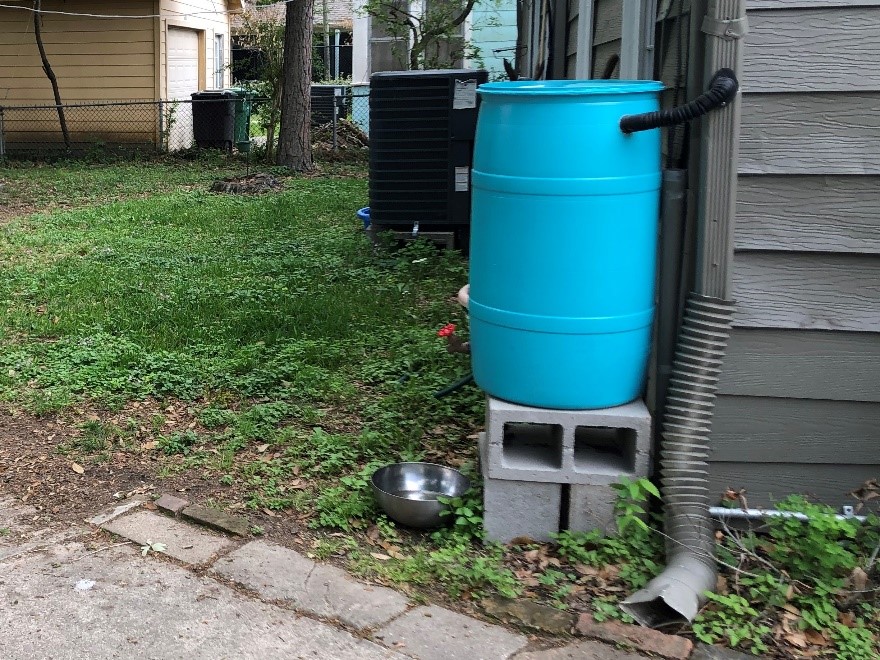
Sasha and fam keeping warm during Winter Storm Uri
If you’ve lived in the Houston-Galveston area, even just for the last few years, you have definitely experienced more than your fair share of “historical” weather events. Between flash flooding, hurricanes, tropical storms, and the recent winter storm, we could all use a break. I have lived in Galveston for almost 9 years and learn something new after each event. I grew up in the Northeast and still was not as prepared as I wish I would have been for winter storm Uri. I have owned my little pier-and-beam island home for about 3 years and rented many an uninsulated apartment before that. There are always projects to be done, supplies to buy, and mental checklists on our minds leading up to hurricane season and now it is apparent we have to worry about winter freezes too. Where do we even begin and what does this all have to do with Galveston Bay? Most folks have now recovered from the winter storm and are now focused on Spring cleaning and gardening, but some are still without water or still working on pipe repairs. It seems the best time to prepare our homes and minds for storms is in between the winter and hurricane seasons, so we can work our way through our To-Do list and don’t have to rush to gather supplies all at once. We have about 2 months before hurricane season officially starts to enjoy this gorgeous weather and reflect on what we need during those less pleasant times of year.
The staff at Houston Advanced Research Center (HARC) put together a story map to explain how and why winter storm Uri caused so much damage for Texans. They also have an amazing tool with ways to make your home resilient whether you rent, own, or are renovating. Check out the Texas Residential Passive Survivability tool for guidance. After our experiences during winter storm Uri, HARC and Galveston Bay Foundation staff put together a list of ideas and supplies that helped, and what would be good to have for next time. Our list below offers tips that reduce energy usage, a win-win for the community and the environment, as well as some affordable items that kept our friends and family safe during the storm. Many of these also come in handy during hurricanes or summer power outages!
One of the most useful things our staff and volunteers had during the storm were their rain barrels from Galveston Bay Foundation. Not only do rain barrels reduce stormwater run-off pollution entering the Bay and help with freshwater conservation, they can also provide an additional water source for your home! On average, these $35 barrels hold 35 gallons of rainwater. Having 2 in my yard, I had a seemingly-bottomless supply of cleaning and flushing water and was even able to provide water for my neighbors! Find out about the next rain barrel workshop here. Although I was inadvertently prepared in this unique way with my rain barrels, there were other things I wish I had and some items that literally kept us alive when our house was 30 degrees or colder for a few days straight.
UNDER $25
Solar chargers for cell phones you can place in the sun during the day to charge phones in the evening.
Head lamps and other solar or battery-powered lights. They even have rechargeable light bulbs you can screw into any lamp or hang up for under $20 online! (I did not know these existed but will definitely be adding them to my disaster kit.)

Flashlights, candles, and headlamps are useful during any power outage.
Extra batteries! We did not have enough and had not checked our supply.
Camping lighters to safely light gas stovetop burners with electric starters as well as candles during a power outage.
Battery-powered fans for power outages in summer.
Ice packs and freezer bags to keep food cold and protected if your fridge loses power
Beverage coolers, like the ones you see at sports games. (We have 2 small, 5-gallon ones we use for road trips and camping. We placed our boiled water in them once the pots cooled and placed them next to the sink for handwashing and drinking water.)

Boiling water for drinking.
Pipe insulation is around $0.25 – $.30 per foot so about 50 feet of pipe insulation will only cost $15 but could save you thousands in repairs. You can even do a little at a time in the off-season.

Insulated pipes under a Galveston Island house.
Hand warmers and hot water bottles (we did not have either of these but wished we had… and our dogs probably did too since they can be helpful to keep pets and kids warm at night.)
Warm hats, wool socks, a pair of gloves, and layers of clothes. Many Texans don’t have a need for these most years but having a small supply for winter is crucial and can be found affordably at thrift stores or end-of-season sales.
Candles helped us have extra light and a little extra warmth but be sure to blow them out before bed and never leave them unattended. A decorative lantern from a craft store kept our largest candle protected as we huddled near it with our pets.
Extra sheets, towels, or blankets to place on drafty floors or hang on windows for better insulation – especially in pier and beam (very affordable at thrift or discount stores and they made a huge difference in our house!)
Insulation kits with plastic wrap for windows, outlet insulation, and weather stripping are helpful to keep both heat and air conditioning inside your home and harsher temperatures out
UNDER $50
$35 Rain barrels from Galveston Bay Foundation provided me with all the water I could have needed to flush my toilets. I was even able to provide water to neighbors in need to flush their toilets!

Rain barrel set up to receive water from a gutter downspout.
Cold-weather sleeping bags. These kept us safe when our house was 30 degrees inside and made sleeping possible on the coldest nights. Plus, the outsides of these are often a very cool-to-the-touch material so they can even be helpful to lay on top of when the weather is hot!
Portable camping stoves and small bottles of propane (or charcoals)– we have a few of these but since we have a gas stove we did not use them. It is advised to only use these outside for safety but since the temperature inside was the same as outside during Uri, we definitely would have cooked outside if needed!
PROJECTS TO PREP YOUR HOME (I have a few of these on my list now…)
Make a disaster prep kit that includes items for hot and cold weather conditions. Check online for thorough lists for your area. We are guilty of not checking and restocking ours before winter and summer as we should.
Before any storm or harsh temperatures, bring and keep your pets indoors! Ensure they have a place to sleep that is a comfortable temperature for humans. If it’s close to freezing, wrap them loosely in blankets or clothing, and give them extra servings of their food to help keep them warm.
Try to always have some food in your cupboard that does not require cooking or a refrigerator. And don’t forget a manual can opener!
Locate your water shutoff valve and ensure you have whatever tools might be required to use it
Check pipes and vents annually for wear, fractures, and clogs or contact your landlord to ensure this is done.
Observe where water pools around your home or car parking area. Redirect with rain barrels, rain gardens, or downspout extensions.
Have plans in place if you need to boil water. Do you have a gas stove top and long-stem lighter or long matches? Do you have a camping grill, suitable pots, and propane available to use outdoors to boil water? WHEN IN DOUBT, DO A 2-MINUTE BOIL IF THE POWER IS OUT!
If you have a generator, test it a few times a year and ensure you have fresh gas before a storm.
Have an A/C and Heater check twice a year at the start of summer and winter. It costs about $75 – $150 but can detect and prevent much more expensive repairs.
Check window and door insulation and add if needed. Adding second pane inserts to old windows costs about $100 per window but is much easier and more affordable than changing out your windows completely! We plan save up for this. In the meantime, shutters, curtains, and blankets helped us conserve energy.
Install gutters and keep them clear. We don’t have gutters, and because of this the sleet came off the eaves of our roof and froze our outflow pipes. This caused our toilet to stop flushing! Gutters for a 1,000 sf, 1-story house in Galveston costs about $400-$500 so we are saving up for this important project!
And last but not least, listen to your mother. My mother always warned me to fill up my gas tank a few days before a storm. I should have listened but I have learned. Our car provided us with a place to warm up, charge our phones, and leave if needed. I underestimated this important tip.
TAKE THE TIME NOW to make a written list of important phone numbers of your utility providers for water, gas, and electric. Also include contact information for family, landlord, neighbors, repair companies (plumbing, electrician, HVAC), and locations of relief (shelters, food pantries, etc). Know where to find up-to-date weather, electric, and water notifications for your area. Space City Weather is an excellent source for straightforward storm updates. Your city’s social media pages and local news channels may be your best source for real-time information regarding other storm-related issues, like flooding and outages.